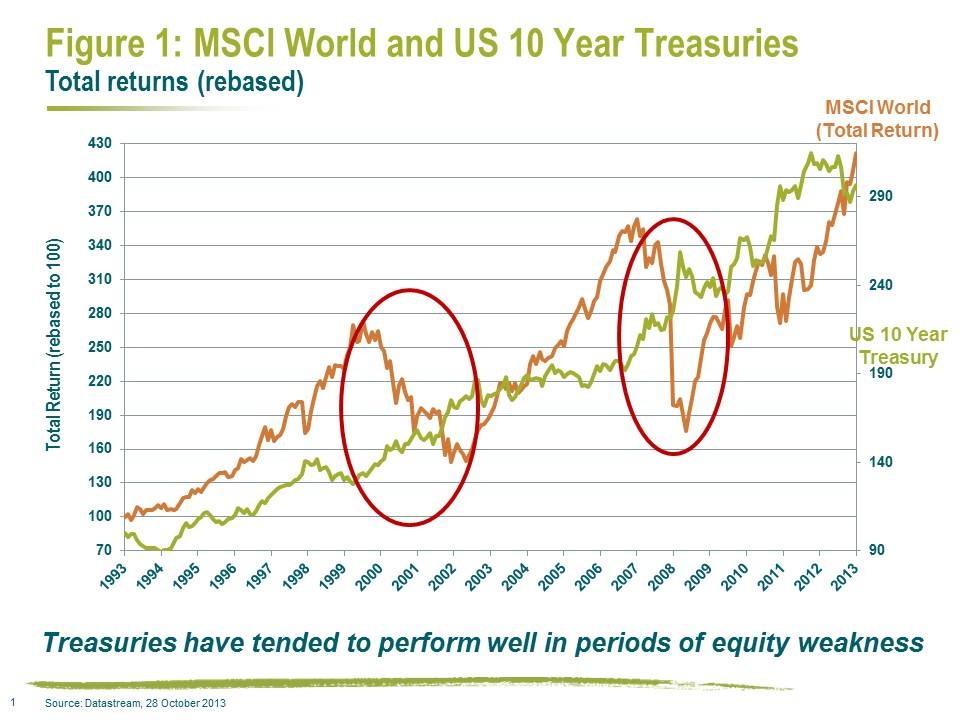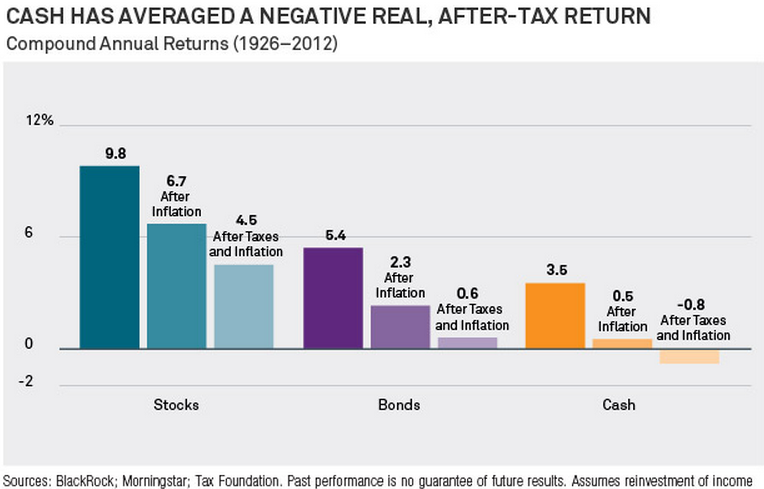Understanding negative returns from bonds
Post on: 16 Март, 2015 No Comment

Download as PDF
Most investors are familiar with shares going up and down short-term but many do not realise that almost all investments, including bond (i.e. fixed interest) investments behave in this way. This can also include cash investments when interest rates move significantly.
This article explains how negative returns occur with bonds and how rising interest rates in particular, lead to low or negative investment returns short-term. In contrast falling interest rates lead to above average short-term returns. Where negative returns occur from interest rate movements, they are temporary in nature. Negative returns are only permanent if they arise from defaults, or the investor cashes in (sells) the investment.
In many ways, fixed interest investments (“bonds”), are like a bank savings account or term deposit. The investors’ money is invested, interest income is received and, at the end of the fixed term (i.e. the maturity date), the original money is returned. However, this does not explain the return on a year by year basis throughout the period i.e. the return you would get if you wanted to cash in (or sell) your bond before maturity. The same applies to cash investments from one day to the next.
The return on bonds, like other investments, is made up of the interest received and the capital movement. The overall investment return, achieved in a period, can be split between:
- Income. The actual income received, i.e. interest;
- Capital. The change in the capital or market value of the bond, i.e. the difference between what you could buy/sell the bond for at the start of the period against what you can buy/sell the bond for at the end of the period.
Negative returns from bonds occur over periods when the capital movement is negative and more negative than the income received.
Like a share, the capital movement is the change in the price for which you can buy/sell the asset. In cases such as short-term bank deposits, there is no change in the market value as you can simply withdraw your money. In other cases, particularly where the term is longer than 6 months, this is not the case. To sell the fixed interest asset you must find a buyer, and the buyer may want a higher (or lower) return than you wanted when you bought the investment. Therefore, they may be willing to pay less (or more) than you did.
Put simply, if interest rates rise after you bought the bond, buyers will pay you less for the bond than you originally paid, as they can get higher returns elswhere. This is why rising interest rates lead to poor returns from bonds.
To demonstrate this, consider an example¹ of a bond with one year to go to maturity issued by the government. The government promises to pay the owner of the bond, whoever that is, an income of $5 per annum for the last year and on maturity pays back the capital of $100.
If you bought the bond, then in one year’s time you would receive $105 ($5 income plus $100 capital). The question is, what should you pay for the bond today?
Let us assume that you could invest money in a bank account to earn 4% p.a. over one year. Then, if you invested $101 in a bank account, the balance in the bank account in one year’s time would be $105 ($4 income plus the original $101) which is the same amount as you would get from the Government bond. Therefore, a fair price for the bond, i.e. its market value today, if one year interest rates are 4% is $101.
It would be better to put your money in the bank than to pay more than $101 for the bond. It would also be better to buy the bond if the price was less than $101 as the return would be higher than 4% as you still get $105 in one year’s time no matter what you pay to buy it now.

Interest rate movements are important
The above example showed that as interest rates rise, e.g. go from 4% to 7%, the market value of a bond falls (i.e. goes from $101 down to $98) and this leads to a capital loss, if the rise in interest rates occurs after you have bought the bond.
If interest rates were 4% when you bought the bond at $101 and then interest rates suddenly rose to 7%, your bond will only be worth $98 (a $3 loss). If you had to sell it, you would realise the loss of $3. Of course, despite what happens to interest rates short-term, if you hold the bond for the year (i.e. until maturity), you get the $3 back as you still get the $105. So you wouldn’t lose money, but you won’t get as much interest as other investors are getting on similar investments.
If interest rates rise significantly, or the term is long (e.g. 10 years), then the capital loss may be more than the interest income payable (i.e. greater than $5 in the example). This is how fixed-interest assets can give poor or negative returns.
The period is also important
The size of the capital loss/gain is not only affected by the change in interest rates but also the duration or time the investment has to go to maturity. The longer the period, the bigger the loss or gain. This is seen from a simple example.
If interest rates rise by 2% say, then for a 5 year bond the capital value or price must go down so the future return (or yield) becomes 2% p.a. higher for 5 years. For a 10 year bond, it must go down more as it has to provide for the 2% p.a. higher return, for 10 years.
Chart 1 shows the relationship between the change in interest rates and the market value of a $100 bond which pays a fixed income of $6 p.a. at various durations if interest rates move ± 1% p.a..
As can be seen, if interest rates rise from 6%, say, to 7% then the market value of a 5 year investment goes down by approximately $4 e.g. from $100 to $96. For a 10 year investment the capital loss is $7.10 i.e. 7.1%.
In contrast, when interest rates are falling the reverse is true. If interest rates fall from 6% to 5% you would get a capital gain of $4 for a 5 year bond and $8 for a 10 year bond as the price, i.e. market value, moves from $100 to $108.
Summary
When it comes to bonds, it’s important to understand the relationship between price and yield (i.e. return). For a particular bond, if the price goes up (i.e. it becomes more expensive), the resulting yield goes down. Likewise, as interest rates (i.e. yields) go up, the price goes down giving a capital loss.














